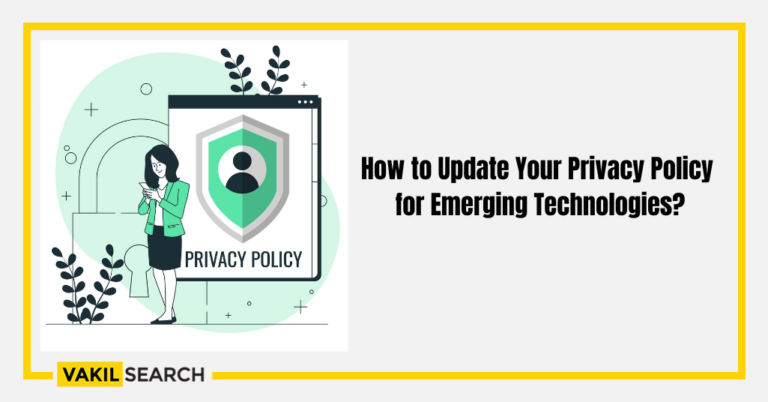Data privacy is becoming increasingly important as the scale of data increases. Know how to collect data for it and present it in the best way with a suitable privacy policy.
Let us get into Privacy Policy: Data Scale Increasing Data privacy, also known as Information privacy, is a subset of data protection that deals with properly handling data with a focus on compliance with data protection regulations.
Data privacy is concerned with ensuring that data is collected, managed, stored, and shared legally and according to privacy policies. There is a significant difference between data protection and data privacy, despite the terms often being used synonymously.
Data privacy specifies who gets access to information, whereas data protection implements technologies and regulations to keep it out. Privacy policy require organisations to adopt precautions and adhere to them to secure private user data, and compliance requirements ensure entities meet customer privacy requests.
Data privacy must be an integral part of your company’s risk management plan, as the use of personal data is increasing. Here are some of the main issues:
What Is Data Protection and Why Is It Important?
Data protection refers to the measures and processes implemented to safeguard the privacy, confidentiality, and security of individuals’ personal data. It is crucial for several reasons:
- Privacy Preservation: Data protection ensures that individuals’ personal information is not accessed, used, or disclosed without their consent.
- Trust and Reputation: Strong data protection practices foster trust between businesses and consumers, enhancing the organization’s reputation.
- Compliance with Laws: Many countries have data protection laws that organizations must comply with to avoid legal consequences.
- Preventing Data Breaches: Robust data protection measures reduce the risk of data breaches and unauthorized access to sensitive information.
What Are Data Protection Principles?
Data protection is governed by essential principles that guide how organizations handle personal data:
- Lawfulness, Fairness, and Transparency: Data processing must be lawful, conducted with fairness, and transparent to individuals.
- Purpose Limitation: Personal data should only be collected for specified, explicit, and legitimate purposes.
- Data Minimization: Organizations should collect and process only the minimum amount of personal data necessary for their purposes
- Accuracy: Personal data must be accurate and kept up-to-date to avoid any adverse impact on individuals.
- Storage Limitation: Personal data should be retained for no longer than necessary for the intended purposes.
- Integrity and Confidentiality: Organizations must ensure the security and confidentiality of personal data during processing.
Data Protection vs. Data Privacy
Data protection and data privacy are often used interchangeably, but they have distinct meanings:
- Data Protection: Refers to the measures and processes taken to safeguard personal data from unauthorized access or processing.
- Data Privacy: Focuses on an individual’s right to control the collection, use, and sharing of their personal data.
While data protection focuses on securing data, data privacy centers on respecting individuals’ autonomy and providing them with control over their personal information.
The New Rules of Data
In recent years, several developments have shaped the landscape of data protection:
- GDPR: The General Data Protection Regulation (GDPR) in the European Union has set a global standard for data protection, imposing strict requirements on how organizations handle personal data of EU citizens.
- Data Breach Notification: Many jurisdictions now mandate organizations to report data breaches to affected individuals and authorities promptly.
- Cross-Border Data Transfer: Regulators are increasingly scrutinizing the transfer of personal data across borders to ensure adequate protection.
- Data Protection Impact Assessments (DPIA): DPIAs are conducted to identify and mitigate risks associated with data processing activities.
Data Privacy Challenges
Following are some of the most prominent hurdles in ensuring foolproof data privacy:
Incorporating
In most businesses, data privacy is considered an afterthought to their disaster recovery or IT security plans. In reality, this is insufficient since data privacy impacts so many aspects of your company. Users cannot afford to neglect privacy. You might find it difficult, so make sure you collaborate with all departments and get their approval. Choose tools compatible with your privacy policies, such as tools that make it easier for data anonymisation.
Devices Are Proliferating
Data privacy is becoming increasingly challenging if you contemplate the Internet of Things (IoT), carry your information technology regulations, and the growth of internet-connected smartphones, laptops, and watches. There is much more info to monitor when more gadgets are incorporated into the workplace. Compliance and data privacy must be managed by your firm from any source across numerous operating systems and apps. Ensure you have proper data governance procedures in place to address this issue.
High Maintenance Costs
Managing system security and preventing data privacy issues at the corporate level can be difficult and expensive. However, the costs of a data breach are so high that you must bite the bullet and invest properly. That is why process automation is critical. However, this can be helpful in several ways:
- Data silos should be reduced
- Manual processing and removing points of friction
- minimising the chance of human error
- More possibilities for de-duplication
- Better governance and control
- Cost savings
Many Industries Struggle With Access Control
A company’s data privacy leaks are usually caused by poorly controlled access. Humans and procedures are as essential as technology. As distributed work becomes more common, managing user access and protecting sensitive information becomes more challenging. A strong data governance process and a strong data architecture are essential to address this.
Data on an Ever-Increasing Scale
As cloud storage and computation prices drop, organisations are floating in data nowadays. However, as the volume of global data expands (to tens of zettabytes), the problem of handling these oceans of information grows huge. You require a solution capable of managing dozens of devices and billions of collected data.
Importance
Data privacy scenarios include personal health information (PHI) and personally identifiable information (PII). Financial data, patient history, social security or identification numbers, names, dates of birth, and contact info are all included.
- Data privacy concerns apply to all sensitive data handled by companies, including shareholder, customer, and employee information. This data will likely be used in corporate operations, development, and financing.
- Data privacy ensures that sensitive information is only accessible to authorised parties. Doing so prevents criminals from misusing data and assists organisations in complying with regulatory requirements.
- Data protection laws govern how certain data types are obtained, transmitted, and used. Names, email addresses, photos, bank account details, IP addresses of personal computers, and biometric data are all examples of personal data.
Collecting Data for Data Privacy and the Best Way to Present
The approaches adopted to gather information differ depending on the application. Some entail the use of technology, whereas others are done by hand.
Some frequent data collection methods are as follows:
- Data collecting functions that are implemented into commercial programs, internet, and mobile apps;
- sensors that capture operational information from mechanical devices, cars, and other machinery
- data gathering from information service providers and other outer information sources
- monitoring social media, message boards, review sites, blogs, and other online outlets
- Online, in-person, or by phone, email, or normal mail surveys, questionnaires, and forms;
- focus groups and individual interviews
- Volunteers in a research project are observed directly.
Let’s Look At What An Entity’s Entails
A privacy policy is a form of legal statement that appears on your website and informs users about how and why you collect their information. It specifies how you use the information, why you are using it, and whether or not it is shared with others.
Governments and corporations cannot interfere without consent with a person’s privacy. However, we constantly disclose private information: our addresses, credit card numbers, and birthdays. In the current internet age, privacy statements are mandatory for almost all establishments. Even private bloggers need to examine whether a privacy policy is necessary for them, even if they maintain no data and sell nothing.
There is a rapid increase in consumer privacy regulations. Customers and business associates are increasingly expecting you to explain how your company uses and protects its information. People are becoming more aware of how a privacy policy works, what to look for, and which policies provide little protection. Having robust data security demonstrates you care about consumers.
These are what the New York Times’ privacy policy includes:
- What personal information do we collect about you, and what are we doing with that data?
- Who else releases the data we collect?
- What are your legal rights?
- How long will you keep the data?
- How do you safeguard my data?
- Are there any rules for children?
- How does information travel around the world?
- What is our legal foundation?
- What about third-party service links?
- How will updates to this privacy statement be communicated?
- How can you get in touch with us?
- Who is the person in charge of your private details?
FAQs
How is privacy and data protection related?
Privacy and data protection are closely related concepts. Data protection focuses on the technical and organizational measures to safeguard personal data, while privacy is the right of individuals to control how their personal data is collected and used.
What are the risks of data privacy?
Risks of data privacy breaches include identity theft, financial fraud, reputational damage to individuals or organizations, and legal consequences for non-compliance.
What is a privacy policy for data collection?
A privacy policy is a document that outlines how an organization collects, uses, and protects personal data. It informs individuals about their rights and choices concerning their data.
How can you improve your data privacy?
Individuals can improve their data privacy by being cautious about sharing personal information online, using strong passwords, enabling two-factor authentication, and regularly reviewing privacy settings on digital platforms.
Conclusion
Data protection is essential in preserving individuals’ privacy and maintaining trust between businesses and consumers. Adhering to data protection principles ensures responsible data handling practices, compliance with laws, and prevention of data breaches. While data protection and data privacy are related, they have distinct focuses, with data protection focusing on safeguarding data and data privacy centering on individuals’ rights to control their personal information. Keeping up with the new rules and regulations in data protection is vital for organizations to maintain ethical data practices and protect sensitive information effectively. Overall, data protection plays a central role in promoting responsible data use and maintaining the delicate balance between technological advancements and individual privacy rights in the digital age.
Also, Read:










